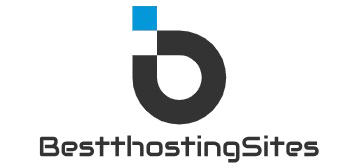How to Optimize Hosting for Speed
In the digital age where attention spans are short and competition is fierce, speed is of the essence. Whether you’re running an e-commerce website, a blog, or a corporate site, the speed at which your website loads can make or break your online success. Slow loading times can drive visitors away, negatively impact your search engine rankings, and ultimately lead to a loss in revenue. This is where optimizing your hosting for speed becomes crucial.
Why Speed Matters

Before delving into the specifics of how to optimize hosting for speed, let’s first understand why speed is so important. Did you know that 47% of consumers expect a web page to load in 2 seconds or less? Moreover, a 1-second delay in page response can result in a 7% reduction in conversions. These statistics highlight the critical role that speed plays in user experience and ultimately, the success of your website.
When a website loads quickly, users are more likely to stay on the site, engage with the content, and convert. On the other hand, a slow-loading website can frustrate users, leading them to abandon the site and seek information or products elsewhere. Additionally, search engines like Google consider page speed as a ranking factor, meaning that a faster website is more likely to appear higher in search results.
Now that we understand the importance of speed, let’s explore how to optimize hosting for speed to ensure your website performs at its best.
Choosing the Right Hosting Provider

One of the first steps in optimizing hosting for speed is selecting the right hosting provider. The hosting provider you choose can have a significant impact on the speed and performance of your website. Here are a few factors to consider when choosing a hosting provider:
1. Server Location
The physical location of the server can affect the speed at which your website loads. Ideally, you want to choose a hosting provider with servers that are geographically close to your target audience. This can help reduce latency and improve the overall speed of your website.
2. Server Type
There are different types of servers available, such as shared hosting, VPS (Virtual Private Server), dedicated hosting, and cloud hosting. Shared hosting is the most cost-effective option but can lead to slower loading times due to sharing resources with other websites. On the other hand, VPS, dedicated, and cloud hosting provide more resources and better performance, making them ideal for websites that require speed and reliability.
3. Server Uptime and Reliability
It’s important to choose a hosting provider with a good track record of uptime and reliability. Downtime can not only frustrate users but also hurt your search engine rankings. Look for a hosting provider that offers a guaranteed uptime and has a reputation for reliability.
4. Scalability
As your website grows, so will your hosting needs. Choose a hosting provider that offers scalability options, allowing you to easily upgrade your hosting plan as your traffic and resource requirements increase.
By carefully considering these factors when choosing a hosting provider, you can set a solid foundation for optimizing your hosting for speed.
Optimizing Website Performance

Once you have selected the right hosting provider, there are several strategies you can implement to further optimize your website’s performance for speed. Let’s explore some of these strategies:
1. Enable Caching
Caching is a technique that stores static files, such as images, CSS, and JavaScript, on the user’s device or in the browser. This reduces the number of requests made to the server, resulting in faster loading times. You can enable caching through plugins or by configuring your server settings.
Implementing browser caching and server-side caching can significantly improve your website’s speed and performance. By caching static files, you can reduce load times and provide a better user experience.
2. Compress Images
Large image files can slow down your website’s loading times. To optimize hosting for speed, it’s essential to compress images before uploading them to your site. There are several tools available that can help you compress images without compromising quality, such as TinyPNG and JPEGmini.
By optimizing images for the web, you can reduce file sizes, decrease load times, and improve overall performance. This simple step can have a significant impact on the speed of your website.
3. Minify CSS and JavaScript
CSS and JavaScript files can also contribute to slow loading times. By minifying these files, you can remove unnecessary spaces, comments, and characters, reducing file sizes and improving load times. There are tools and plugins available that can help you minify CSS and JavaScript files with ease.
Minifying CSS and JavaScript files can streamline your website’s code, resulting in faster loading times and better performance. This optimization technique is essential for improving speed and user experience.
4. Optimize Database Queries
Database queries can impact the speed of your website, especially if they are slow or inefficient. By optimizing database queries, you can improve the performance of your website and reduce load times. You can optimize database queries by indexing tables, using caching, and avoiding unnecessary queries.
Optimizing database queries is a critical step in optimizing hosting for speed. By ensuring that your database is running efficiently, you can enhance the overall performance of your website.
5. Content Delivery Network (CDN)
A Content Delivery Network (CDN) is a network of servers distributed geographically that work together to deliver content more efficiently to users. By using a CDN, you can reduce latency, distribute server load, and improve the speed at which your website loads. CDNs cache static content and deliver it from the server closest to the user, resulting in faster loading times.
Integrating a CDN into your hosting setup can significantly improve the speed and performance of your website. CDNs are particularly beneficial for websites with a global audience, as they can deliver content quickly to users around the world.
Monitoring and Testing Performance

Optimizing hosting for speed is an ongoing process that requires monitoring and testing to ensure optimal performance. Here are a few tools and techniques you can use to monitor and test the performance of your website:
1. Google PageSpeed Insights
Google PageSpeed Insights is a free tool that analyzes the performance of your website and provides suggestions for improvement. By running your website through PageSpeed Insights, you can identify areas that need optimization and take steps to improve speed and performance.
2. GTmetrix
GTmetrix is another powerful tool that provides detailed reports on your website’s performance, including page speed, YSlow score, and recommendations for improvement. By using GTmetrix, you can gain valuable insights into your website’s performance and make necessary optimizations.
3. Load Testing
Load testing involves simulating high traffic scenarios to evaluate how your website performs under heavy load. By conducting load tests, you can identify bottlenecks, optimize server settings, and ensure that your website can handle spikes in traffic without slowing down.
4. Performance Monitoring Tools
There are several performance monitoring tools available that can track key performance metrics, such as load times, server response times, and page sizes. By using these tools, you can monitor your website’s performance in real-time and make adjustments as needed to optimize speed and reliability.
By regularly monitoring and testing the performance of your website, you can identify areas for improvement and ensure that your website is optimized for speed.
Common Misconceptions
Despite the importance of speed in the digital landscape, there are several common misconceptions surrounding how to optimize hosting for speed. Let’s address some of these misconceptions:
1. More Plugins Mean Better Performance
While plugins can enhance the functionality of your website, installing too many plugins can actually slow down your website. Each plugin adds additional code and resources that can impact load times. It’s essential to use only necessary plugins and regularly review and optimize their performance.
2. Speed Optimization is a One-Time Task
Optimizing hosting for speed is not a one-time task but an ongoing process. As technology evolves and user expectations change, it’s important to continually monitor and adjust your website for optimal performance. Regularly reviewing and optimizing your website can help maintain speed and usability over time.
Conclusion
To wrap things up, optimizing hosting for speed is essential for ensuring the success of your website in the digital landscape. By choosing the right hosting provider, implementing optimization strategies, and monitoring performance, you can create a fast, reliable, and user-friendly website that attracts and retains visitors. Speed matters, and by prioritizing speed optimization, you can stay ahead of the competition and provide a superior online experience for your users.
Remember, speed is not just a technical consideration but a critical factor that can impact user experience, search engine rankings, and ultimately, the success of your website. By following the tips and strategies outlined in this article, you can optimize your hosting for speed and set your website up for success in the competitive online world.




